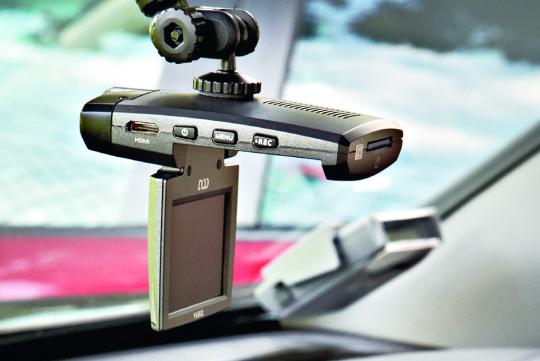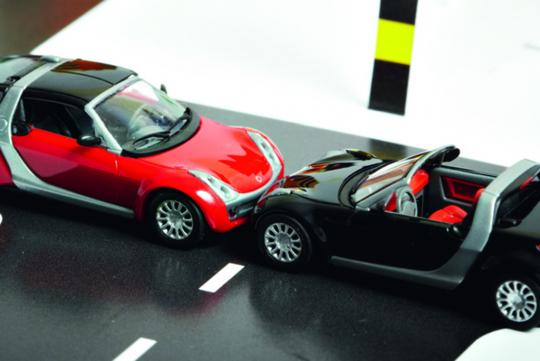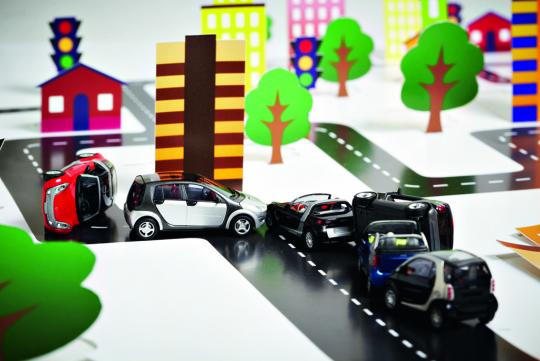Electronic Eyewitness
Electronic Eyewitness

 Accidents can happen, no matter how much effort we put into avoiding them. All it takes is for another motorist to make a careless error, and even the most skilled and careful driver can end up in a fender-bender.
Accidents can happen, no matter how much effort we put into avoiding them. All it takes is for another motorist to make a careless error, and even the most skilled and careful driver can end up in a fender-bender.
Minor mishaps used to be less stressful. If the incident left the vehicles in question with minor scratches or small dents, the matter could be quickly (and privately) settled if one party compensated the other. You only needed to inform your insurer if the damage was bad.
But things changed. In 2008, the GIA (General Insurance Association of Singapore) introduced the MCF (Motor Claims Framework), which requires all policyholders to report every accident - no matter how minor - to their insurer. This regulation came about as a result of the growing number of drivers who would later file exaggerated claims for “grievous injuries” sustained in accidents.
To cope with the higher payouts that were affecting their bottom line, insurance firms started charging steeper premiums to all motorists – even those who had never made a claim weren’t spared.
For protection, drivers began installing in-car cameras in their vehicles, using the recorded footage (which is typically stored on SD or micro SD cards) to combat fraudulent claims fi led against them by unscrupulous parties. The popularity of in-car cameras also took off following that infamous Ferrari accident - which was captured by a taxi’s in-car recorder - at the junction of Victoria Street and Rochor Road last year
TIP 1: Pixels Matter
The first and most important consideration when it comes to choosing an in-car camera is its resolution, which is expressed in terms of the number of pixels per square inch. A device with a 1080i format is definitely better than one only capable of 720i, because having more pixels per square inch means clearer videos. It would be best, however, to opt for a HD (high-definition) camera, which has a resolution of 1080p. The difference between 1080i and 1080p lies in their playback – the “i” rating in the former refers to interlaced video, while the “p” in the latter refers to progressive scan.
For non-geeks who rarely venture into the “hardware zone”, interlaced video tends to flicker when replayed in slow motion, while progressive scan delivers sharper images, especially when it comes to fast-moving or night sequences. One can imagine the advantages of HD, especially when the footage is used as evidence. HD-format cameras can cost as little as $150.
TIP 2: Vantage Points
Another vital feature to consider is how wide the camera’s lens angle is. Because you want to capture as much as possible, opt for a device with a field of vision of at least 120 degrees.
If you mount the camera in the middle of your windscreen just in front of the rear view mirror, you should at least be able to see a bit of space on either side of your vehicle’s bonnet. Alternatively, you can position the camera higher up on the windscreen to expand the viewing angle.
TIP 3: Motion Detection
For car owners concerned with vehicle security, it would be wise to invest in a camera that can be activated via its motion sensor. Basically, the camera stays “asleep” and only “wakes up” and begins recording when there is continuous movement (usually for 20 seconds or more) near the car. This could prove useful in helping nab vandals keen on “sharing” their artwork with vehicle owners.
The drawback to this function is that most cameras have a short battery life, and hooking them up to your car could render your vehicle’s battery flat the following day. Either way, this means limited recording times.
Though not absolutely necessary, some firms have introduced cameras that are GPS-enabled, to help in more accurately pinpointing a vehicle’s location and even its speed when the accident occurred. You’re likely to find this function in cameras with shock sensors, which can supposedly detect when a collision has occurred. When triggered, devices with these sensors will usually save the video in a separate folder, which facilitates evidence gathering.
Whichever in-car camera you choose, remember that the gadget is a double-edged sword: The recorded footage could clear you of any wrongdoing, but it could also put you
This article was written by Jeremy Chua, writer for Torque.




5 Comments
Recommended Comments
Create an account or sign in to comment
You need to be a member in order to leave a comment
Create an account
Sign up for a new account in our community. It's easy!
Register a new accountSign in
Already have an account? Sign in here.
Sign In Now